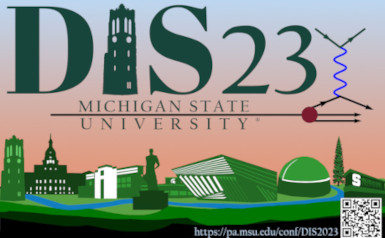Speaker
Description
Mapping the 3D structure of the proton in terms of its spinning quark and gluon constituents is one of the main goals of current hadronic physics investigations, especially the field of femtography. Generalized parton distributions (GPDs) contribute to solving this problem. Fourier transforms of GPDs give single particle spatial densities of quarks and gluons for particular longitudinal momentum fractions, x. The physical properties derived from GPDs include the average radius of each partonic component of the nucleon and other quantities. In addition to these one-particle densities, a fuller dynamical picture of the proton’s interior can be obtained by introducing two-particle spatial density distributions. To capture the proton’s internal structure, information on the relative position between partons is crucial; two-particle densities give such relative positions between the quarks and gluons in the transverse plane. Two-particle densities depend on two spatial variables, which can be chosen to be the relative particle motion and the center-of-momentum motion; they can, therefore, provide a measure of the correlations in the particles’ motion. Connecting the two-body densities to observables, we show that two-particle densities can be defined in QCD with generalized double parton distributions (GDPDs). Using GDPDs, we can describe nucleons’ quark and gluon dynamics through overlap probabilities. Such quantities allow us to extract information from data on the geometric structure of the proton; we can determine whether the gluons cluster around valence quarks, or if they are distributed in a diffused cloud within the proton.
| Submitted on behalf of a Collaboration? | No |
|---|---|
| Participate in poster competition? | Yes |
